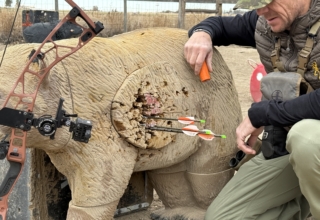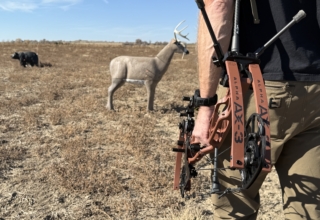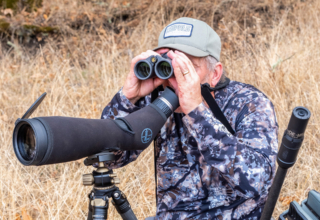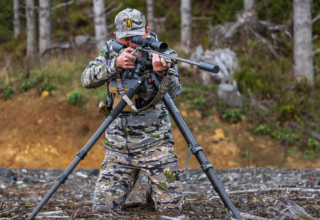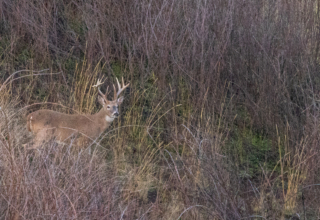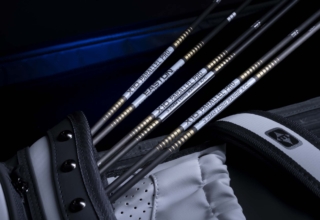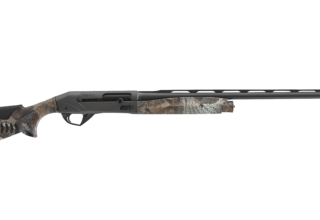If you’re looking to create unique decoy spreads that will set you apart from other hunters, heed these late-season silhouette tips and kill more birds.
by Scott Haugen
When a pile of wigeon showed up on my Moultrie Mobile trail camera, I downloaded the video clip. Soon I was watching the feathered lawn mowers frantically feasting on freshly sprouting rye grass. Their speedy, erratic movement captured at ground level on the trail camera clearly stood out. It made me think.
Over the next few days, I tried different ways to stake some silhouette wigeon decoys so they’d move in a slight breeze. None worked. Either the stakes were too thick or not the right length, or the decoys simply didn’t move naturally.
Then, one night, I removed a Higdon FLATS Motion Silhouette Duck Stake from a silhouette mallard decoy and tried it with a Big Al’s Wigeon Silhouette. The stake was a bit too thick for the wigeon decoy to spin freely. I found a broken marshmallow roaster in the corner of the shop with the correct diameter to increase the slot size in the Big Al’s Wigeon decoy. I cut a foot-long section, sharpened the end on a grinder, then forced it all the way through one of the holes in the Big Al’s decoy. Then I slipped the wigeon decoy onto a Higdon FLATS Motion Stake. It worked. The decoy could easily rotate in both directions. That night, I fitted a dozen wigeon decoys to the moving stakes. Morning couldn’t come fast enough.

By 5:30 a.m., my dad and I were on the wigeon feeding grounds. We sprinkled three dozen Big Al’s Wigeon Silhouette decoys on standard stakes with the one dozen moving wigeon decoys. A slight breeze blew that morning, just enough to keep the decoys moving. In less than 30 minutes we shot our limits of wigeon, and all were dumping into the decoys.
I had over a dozen successful wigeon hunts last season using Big Al’s Wigeon decoys on the Higdon FLATS Motion Stakes. At the time of this writing, the wigeon are just arriving; they’re late this year. But we’ve had a few great hunts over the moving wigeon silhouettes. The life-like action of the silhouettes adds an element of realism that genuinely fools ducks. Their sporadic action almost mimics the fidgeting, random movement of what I see on multiple trail camera video clips when big flocks of wigeon are grazing.
My 84-year-old father was so impressed that he used them with two of his buddies on a hunt. They shot limits in less than an hour. If you’re looking to fool late-season ducks, this is just one silhouette change-up that will make a difference.

As hunting pressure increases, I’m always searching for ways to make my decoy spread look different from other hunters in the area. I’ve quit using wind-aided, wing-spinning decoys because everyone seems to have them. I’ve also gone to smaller spreads using one, sometimes two, of the Motion Ducks Spreaders and Jerk System.
Another move that significantly increased the visibility of my silhouettes was securing them to fallen trees and tree limbs. One day, my buddy Austin Crowson and I were hunting ducks in a flooded field. Two hundred yards to the east of us, mallards and wood ducks poured into a tiny body of water, one-tenth the size of what we hunted. Looking through binoculars, Crowson noticed some mallards standing on the limbs of a fallen tree.
When we left, I set a trail camera on the fallen tree. That afternoon, I started getting video clips of ducks landing in the water and hopping onto the log. Many ducks slept on the log and limbs throughout the day and night. Two days later, we hunted that spot and shot limits quickly.
By the time Crowson and I hunted the small hole, little water was left. We set out only three floating mallard decoys. What made the spread were the one dozen Big Al’s Mallard Silhouettes we pounded in the fallen tree limbs. With their elevated position, ducks could see them from a surprising distance. This meant we had to call very little. The ducks were keying on the decoys a long way out, and remained focused on them.

Last season, we used those same decoys on multiple hunts in sloughs and creeks. This season, our first hunt of the year found Crowson and I pounding the stakes into a big, fallen log in a river slough. We had set a trail camera on the giant log and caught video clip after video clip of mallards, wood ducks, and even honkers on the log to preen and sleep. The camera caught numerous other ducks swimming in the slough. We’ve had four successful hunts in that spot this season, and there’s no doubt the visibility of the silhouette decoys perched naturally on the limbs helped capture the attention of ducks.
This season I’ve been using Big Al’s updated mallard silhouettes. Their lighter color pops at a fantastic distance, and the natural body positions appeal to ducks. When securing silhouettes to fallen trees, limbs, or driftwood, the objective is to create a realistic look that ducks see from great distances, which looks different from what other hunters do.
I tried several ways to secure the silhouette decoys to logs and limbs. I went online and bought 100 circle-top landscape pins. They’re 10 inches long and made of 8-gauge steel. Twelve-inch pins would work, too. These are the perfect size to fit in Big Al’s Silhouette decoys, as the decoys hold securely on them and do not slip off when being carried around. Then, I spray-painted the top portion of the pins black to hide the shine.
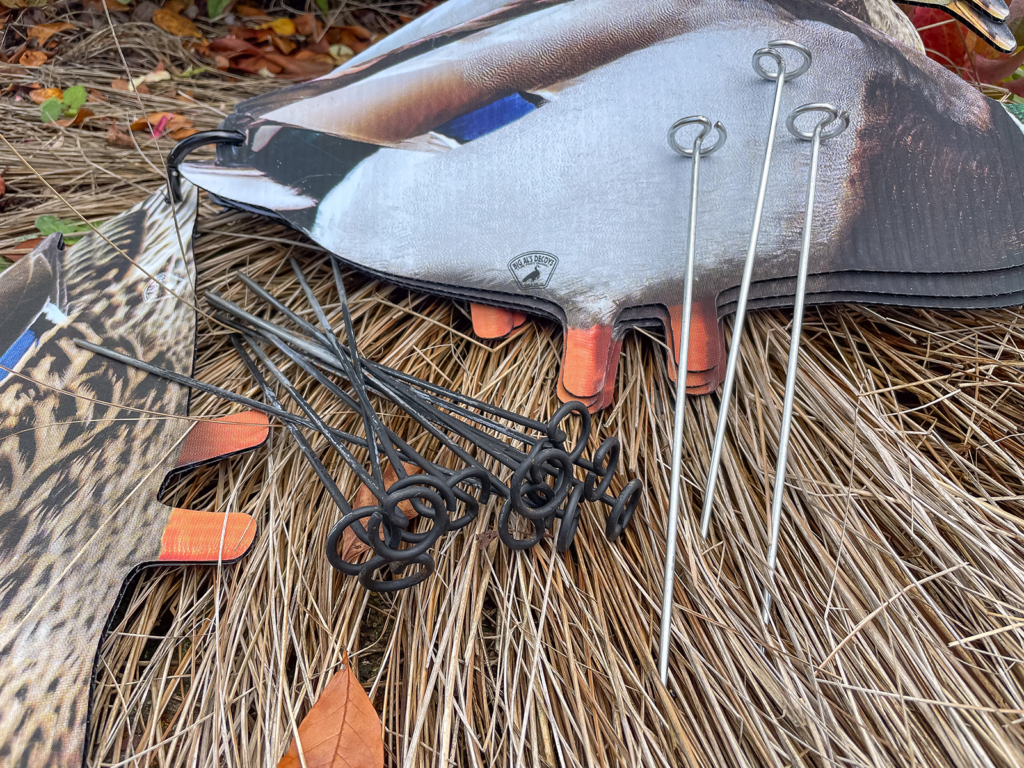
At first, I grabbed a rock or limb to drive the stakes into a log, but I soon learned these weren’t always available. So, I bought a small hammer at the local hardware store. I cut it in half and then drilled a hole through the handle. I also drilled a hole in the tail of each decoy. That allowed me to secure the decoys with inserted landscape pins to a carabiner. The downsized hammer also fit on the carabiner, keeping it with the decoys at all times. This makes for a quick and easy setup.

As with the moving decoys, you don’t need a lot of pinned decoys in the spread. I use only a dozen moving wigeon decoys on the Higdon Motion Stakes. I space them sporadically throughout three to five dozen Big Al’s Wigeon Silhouettes on standard stakes so it looks like birds throughout the whole flock are moving. I’ll include six to 24 Final Approach Live Wigeon floating decoys, depending on space. This sets the scene where wigeon land in the water and swim ashore to feed and preen.
The number of decoys staked to a fallen tree depends on the tree’s size and where trail cameras reveal birds sitting. I mimic what I observe on trail cameras or what I’ve seen while scouting. Having accumulated hundreds of video clips, it’s been interesting to see so many birds standing in the same exact place. Rarely are there a lot of ducks at once. Typically, four to 12 silhouette decoys staked to a fallen tree is all it takes to catch the attention of distant birds. The decoy’s visibility is greater when set two to six feet out of the water. Add a half-dozen floating decoys around it, and the spread will look real.
With the best days of the season still ahead, now is the time to make changes in your spread to fool more ducks. Scout and run trail cameras to see what birds are doing, then use silhouette decoys to create natural-looking spreads. Late-season birds are wise, which means we have to hunt smarter.
Note: For copies of Scott Haugen’s popular line of hunting and fishing books, visit scotthaugen.com.



